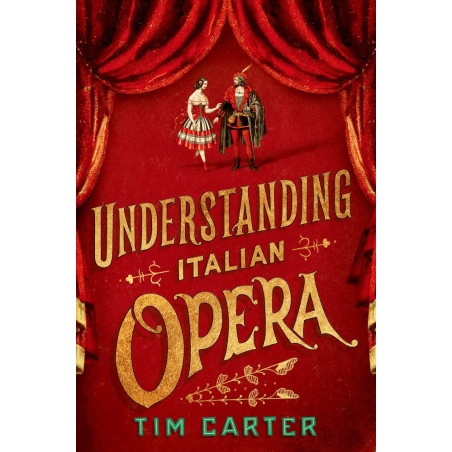Opera has long fascinated creative artists and audiences alike. It is often regarded as the pinnacle of high art, yet it is also shrouded in mystique. Understanding Italian Opera unravels its many layers by looking closely at five of the most enduring and emblematic Italian operas from Monteverdi to Puccini.
CONTENTS
Preface
1: What is Opera?
Some definitions
In praise of librettists
Italian versification
Poetic structures and musical consequences
Two examples from Mozart
An exotic and irrational entertainment?
2: Giovanni Francesco Busenello and Claudio Monteverdi,
L'incoronazione di Poppea (Venice, 1643)
Monteverdi in Venice
The first operas
But here the matter is represented differently
Speaking and singing
Seductive Poppea
Seneca's death
Ottavia in exile
Ecstasies of love
3: Nicola Francesco Haym and George Frideric Handel,
Giulio Cesare in Egitto (London, 1724)
Arcadian reforms
Adapting Bussani
Recitatives and arias
Some alternatives
Fly, my heart, to the sweet enchantment
Taming Cleopatra
Cesare returns
All's well...
4: Lorenzo da Ponte and Wolfgang Amadeus Mozart,
Le nozze di Figaro (Vienna, 1786)
... these Italian gentlemen are very civil to your face
Translating Beaumarchais
Aria forms
A duet, a trio, and a sextet
Finales
Readings and messages
5: Francesco Maria Piave and Giuseppe Verdi,
Rigoletto (Venice, 1851)
Le Roi s'amuse
Cantabiles and cabalettas
Duets
Arias and monologues
A quartet ... a storm ... and a death
6: Giuseppe Giacosa, Luigi Illica, and Giacomo Puccini,
La Boheme (Turin, 1896)
Bohemian rhapsodies
A publisher, two librettists, and a rival
A missing act
Verse and music
Formless forms?
Operatic realisms
Mimi dies
7: Afterthoughts


